
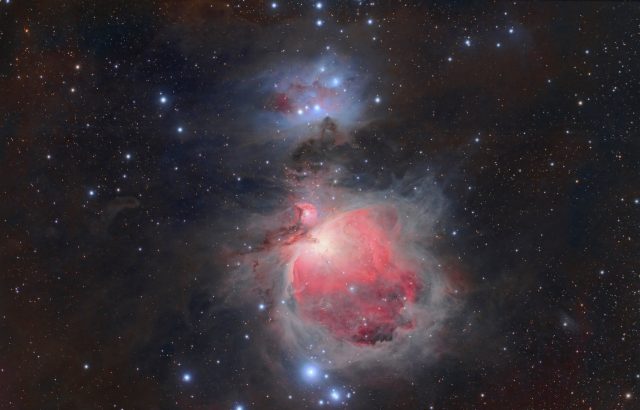
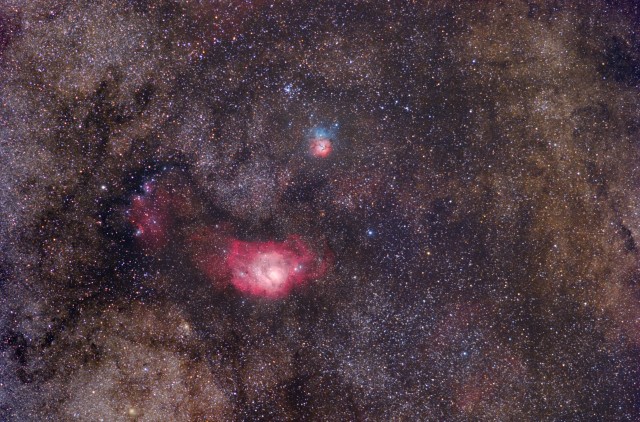
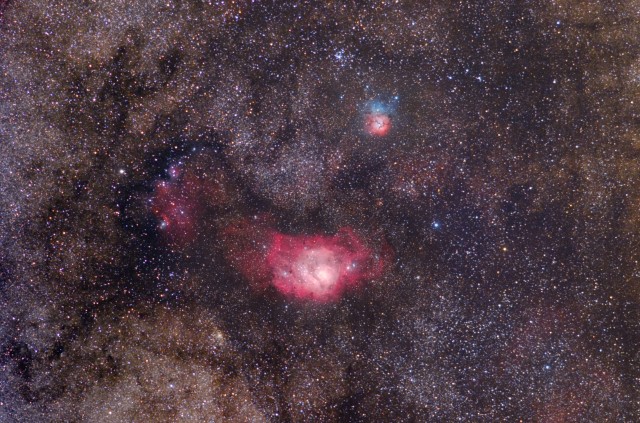
Here’s a rework of an image with data from higher resolution images overlayed on a base image that was taken with my 200mm F/2.8 Canon telephoto lens. The overlay images were closeups of M8 and M20 taken with the TV-85 telescope.
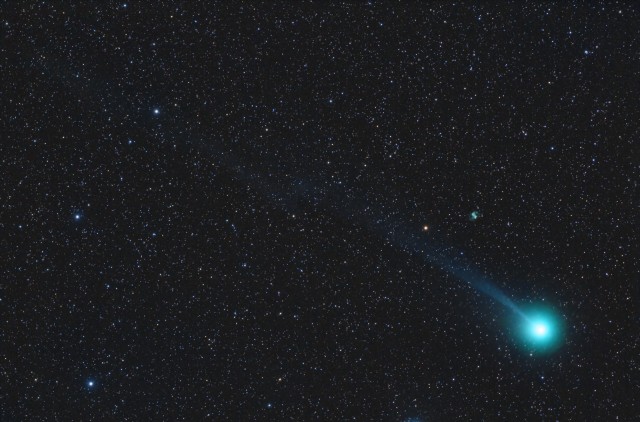
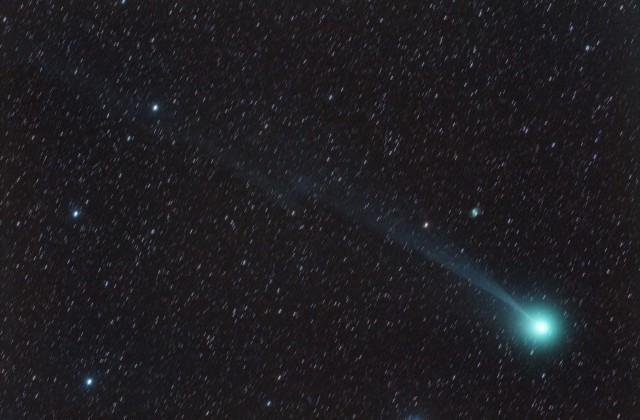

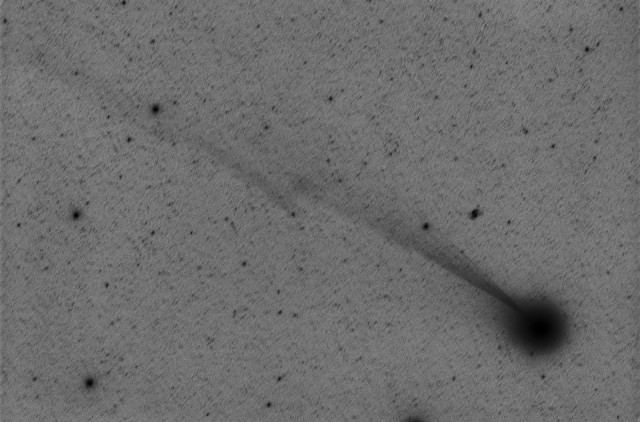
A closer pairing of Comet Lovejoy and the Little Dumbbell Nebula on the night of Feb 20, 2015, plus another tail disruption event was in progress.

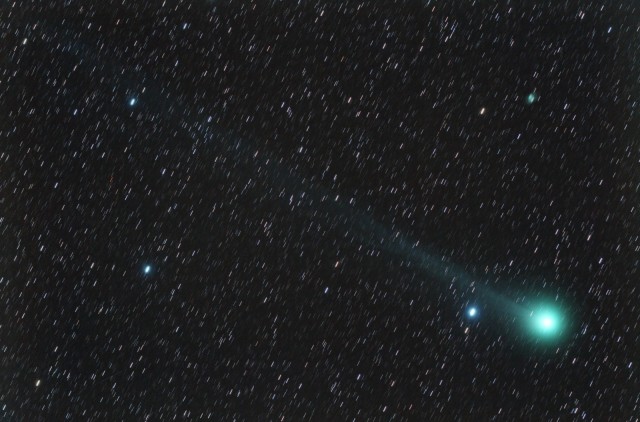

The last significant encounter with another Messier object for Comet Lovejoy Q2 before it dims down more and moonlight eventually spoils the view. The best part of the apparition is about over. From now on, the comet will get fainter as it recedes from Earth and heads back out into deep space.
Its has been a fun time imaging this bright comet over the last two months. I had good public exposure with 2 news organizations publishing two of my images, one of them being NBCNews.com. Hopefully, another bright comet will soon appear and put on another show for us. I’m keeping my fingers crossed. 🙂
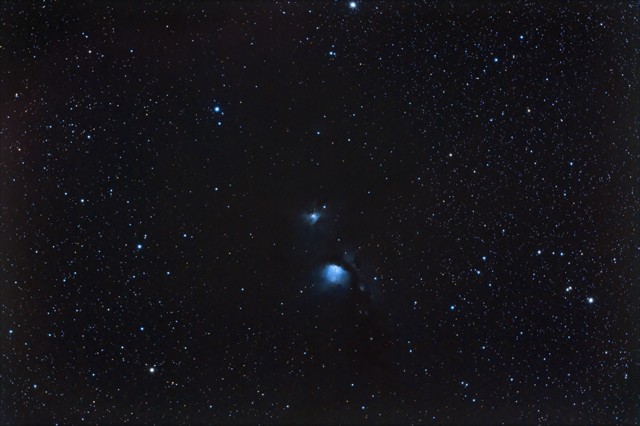
Good transparency and cold temps helps to get good images at ISO 800. 5 minutes subs are not too noisy and stack up nicely. This image is only 110 minutes of integration and could use more time, but it came out fine for an unmodified camera.
The full size version is here.
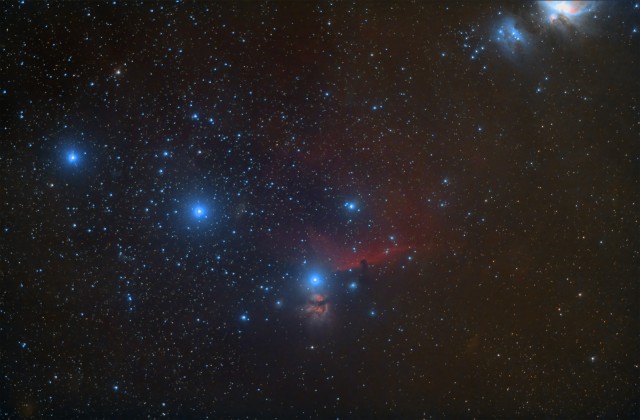
It was very clear on this night at one point and Lovejoy had set, so I shot a few sub-images of Orion’s Belt to kill some time. Although the Lumicon Deep Sky filter lets me go deep, brighter stars have ghost reflections off the filter and I had to clone them out. There’s still a few remnants of them left.
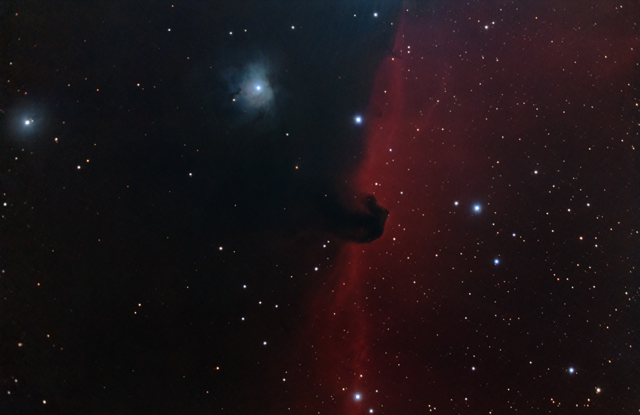
After the moon had set on Dec 1, 2014, I decided to let the camera and guiding run while I slept and take images of the Horse Head Nebula region. I managed to get 33 good sub-images before the clouds messed up the tracking.
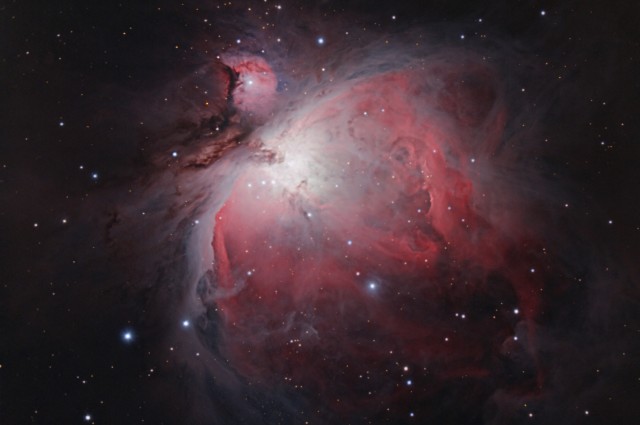
One of my first images shot through a telescope at prime focus was of M42, the Orion Nebula. It was taken with my Celestron C8 SCT and 35mm film. Here’s the latest digital version of the same object taken with the same scope. I had to work hard aligning and collimating the scope before taking the sub-images for this, but the old girl is back in shape and delivered some useful data for this often imaged object. It just fits in the field of view at 1260mm of focal length.